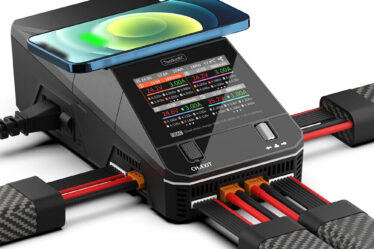
The landscape of the food and beverage sector is ever-changing. The use of procedures that were acceptable only a few years ago is rapidly being phased out in favor of quicker and more effective ones.
Restaurant management software is one area of restaurant operations that has changed the most. Every day, new systems emerge that can carry out specific tasks with greater accuracy and efficiency than was previously possible.
When used properly, restaurant management software is a surefire way to guarantee a restaurant’s success. Here is some essential software that a restaurant needs to have:
- Point of Sale (POS) software allows restaurants to process sales transactions, manage inventory, and track customer information.
- Restaurant management software helps with scheduling, payroll, and other back-of-house operations.
- Accounting and financial software: This software helps restaurants manage their finances, including invoicing, budgeting, and reporting.
- Marketing and customer relationship management (CRM) software helps restaurants build customer relationships and promote their business through various channels.
- Online ordering and delivery management software enables customers to place orders online and track their delivery status.
- Inventory management software helps restaurants track their inventory levels, set reorder points, and generate inventory usage and cost reports.
- Employee scheduling software: This software helps restaurants create and manage employee schedules and track time off requests and shifts.
- Customer feedback and survey software: This software allows restaurants to gather customer feedback and improve their service and food offerings.
- Kitchen display system (KDS): This software helps kitchen staff to manage orders and communicate with the front-of-house staff.
- Cloud-based data storage and backup software: This software allows restaurants to store and back up important data in a secure and accessible way so that they can access it from anywhere.
- Mobile Payment Software: This software allows customers to make payments via mobile devices like smartphones and tablets.
- Table reservation software allows customers to make online reservations and manage table seating arrangements.
- Employee performance tracking software: This software allows managers to track employee performance, set goals, and provide feedback.
- Kitchen automation software: This software helps kitchen staff automate tasks such as ordering supplies, tracking inventory, and preparing food orders.
- Loyalty program software: This software allows restaurants to create and manage a loyalty program for customers to encourage repeat business and increase customer retention.
- Data analytics and reporting software: This software helps restaurants to track key performance indicators such as sales, customer satisfaction, and employee performance and generate reports on these metrics.
- Digital menu software: This software allows restaurants to create and update digital menus displayed on tablets or screens, allowing customers to place orders and pay directly from their tables.
- Food safety software: This software helps restaurants to manage and track food safety compliance, including temperature monitoring, HACCP, and food safety audits.
- Social media management software allows restaurants to manage and track their social media presence and engagement and schedule posts in advance.
- Email marketing software: This software allows restaurants to create and send email campaigns to customers for promotions, events, and other updates.
- Gift card software: This software allows restaurants to create, sell and manage digital and physical gift cards.
- SMS marketing software: This software allows restaurants to send text messages to customers for promotions, special offers, and reminders.
- Online reputation management software: This software allows restaurants to monitor their online reputation and respond to customer reviews, ratings, and comments.
- Workforce management software: This software allows restaurants to manage their workforce, including scheduling, attendance tracking, and employee time clock.
- Business intelligence software: This software allows restaurants to access real-time data and analyze it to make better business decisions.
Summing up, there are many software options available for restaurants, and the specific needs of each business will vary. These are just a few examples of software that can be beneficial for a restaurant to use. However, if you are a restaurant owner looking for an all-in-one restaurant management software, Favouritetable is your best bet. It’s always important to remember that the right software can help a restaurant streamline its operations and increase efficiency. Still, it’s also important to select software that will meet their specific needs and is easy to use and integrate with existing systems.

